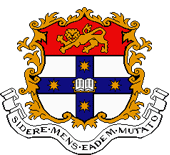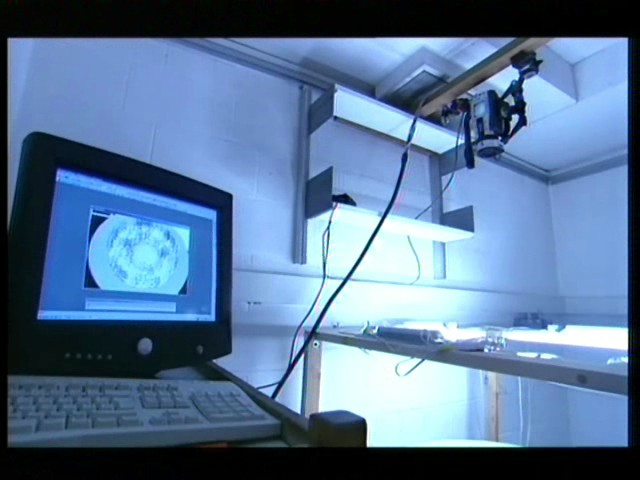|
|
||||||||
|
|
|
|||||||
|
|
|
|
||||||
|
Contact
telephone number (Australia) +61(0)401 325 405 (mobile)
|
Current position I m working on experimental and theoretical studies of collective motion in animal groups, currently focusing on locust migratory bands, with Steve Simpson and Greg Sword at the School of Biological Sciences at The University of Sydney. To develop a better understanding of locust collective movement, and help building a predictive model of it, we are combining lab and field experiments (which involve innovative techniques such as tracking individuals with a UAV) with computer simulations, which allow us to simulate up to millions of locusts using CUDA (parrallel computation on graphic cards). Ultimately, our goal is to build a model that will provide control operations with a better knowledge of band movement and trajectories so that improved methods such as barrier spraying can be optimized.
My research interest Very often in Nature, things happening at some "macroscopic" level, say a group of animals or some tissue, are poorly understood and seem hardly predictable when they result from a multitude of interaction at a lower "microscopic" level, say a massive number of individual animals or cells. Linking these two levels, or more generally, bridging the gaps between scales is a topic that never ceases to fascinate me. To achieve this goal, I use methods originated from the framework of self-organization and non-linear systems, where models are used to predict how local rules at the microscopic level result in patterns observed at the macroscopic level. Models are built from the experimental quantification of behaviour and interactions at the individual or microscopic level - that is, the rules used in the model correspond, as much as possible, to mechanisms observed and measured empirically - I tend to think that it's the only way to make models really useful for the experimenter, abstract rules and parameters that can't be translated into some biological mechanisms are most of time leading to dead-ends.
When we have our model, then its predictions about the collective pattern, or macroscopic level, are confronted to experimental results. Such cycles involving both experiments and models have been successfully applied to social insect collective behaviour such as foraging and trail formation, nest construction, division of labour etc... They are increasingly used to study other animal collective behaviour such as fish schools, bird flocks, or locust marching bands and swarms (my current favourite model system), but have been and will more and more be used to study organization of large groups of microscopic organisms or cells. Why is that so important? It's a key to understand how animal societies work, which is fascinating enough by itself in my opinion, but it's also opening new perspectives in understanding the evolution of sociality, and even more broadly, understanding how things organize at a level from the complex interactions happening at a lower level is probably holding many exciting new insights about evolution of life in general. The topics I'm more precisely currently studying are the following - Collective patterns and the way animals that have only a limited perception can achieve large scale structures such as nests or networks spanning over their territory. This includes most of my PhD work on ant tunneling networks as well as human street networks. I also recenttly started to work on wood ants trail networks. - Collective movements in
animal groups and the way this is scaling up from interactions among
individual to migrations over large scales. My current work is focused
on how, where and when locusts massive marching bands form and lead to
outbreaks. - and much more... The page is still under construction Previous employement /education - 2004: PhD - Doctorat de l'Universite Paul Sabatier, Toulouse, France. Etude experimentale et modelisation de la morphogenese des reseaux de galeries chez la fourmi Messor sancta. (An experimental and theoretical study of the morphogenesis of tunnel networks in the ant Messor sancta). - 2005: Postdoctoral Research Associate, University of Oxford (with Steve Simpson, Iain Couzin and David Sumpter).
See also: Steve
Simpson The
Unit of Social Ecology in Brussels The
Australian Plague Locust Commission
|
Buhl J., Sword G. A., Clissold F. J., Simpson S. J. (2010) Group structure in locust migratory bands. Behavioral Ecology And Sociobiology, In press Escudero C., Yates, C.A., Buhl J., Couzin I. D., Erban R., Kevrekidis I. G., Maini P.K. (2010) Ergodic Directional Switching in Mobile Insect Groups. Physical Review E, 82,011926 Yates, C.A., Erban R., Escudero C., Couzin I. D., Buhl J., Kevrekidis I. G., Maini P.K., Sumpter D. J. (2009) Inherent noise can facilitate coherence in collective swarm motion. PNAS, 106:5464-5469 Buhl J., Hicks K., Miller E. R., Persley S., Alinvi O., Sumpter D. J. (2009) Shape and efficiency of wood ant foraging networks. Behavioral Ecology and Sociobiology, 63:451-460 Sumpter D. J., Buhl J., Biro D., Couzin I. D. (2008) Information transfer in moving animal groups. Theory in Biosciences, 127:177-186 Bazazi S., Buhl J., Hale J. J., Anstey M. L., Sword G. A., Simpson S. J., Couzin I. D. (2008) Collective Motion and Cannibalism in Locust Migratory Bands. Current Biology, 18:735-739ARTICLE Buhl J., Gautrais J., Deneubourg, J.L., Kuntz P., Theraulaz. (2006) The growth and form of tunnelling networks in ants. Journal of Theoretical Biology, 243, 287-298. PDF Buhl, J., Sumpter, D.J.,
Couzin, I.D., Hale, J., Despland, E, Miller, E & Simpson, S.J.
(2006) From disorder to order in
marching locusts. Science,
312, 1402. Buhl J., Gautrais J., Reeves N., Sole R.V., Valverde S., Kuntz P., Theraulaz G. (2006) Topological patterns in street networks of self-organized urban settlements. European Physical Journal B, 49, 513-522.PDF Buhl J., Deneubourg J.L., Grimal A. and Theraulaz G. (2005) Self-organized digging activity in ant colonies. Behavioral Sociobiology and Ecology. 58, 9-17.ARTICLE Buhl J., Gautrais J., Sole R.V., Kuntz P., Valverde S., Deneubourg J.L., Theraulaz G. (2004) Efficiency and robustness in ant networks of galleries. European Physical Journal B, 42, 123-129.PDF Buhl J., Gautrais J., Deneubourg J.L. and Theraulaz G. (2004) Nest excavation in ants: group size effects on the size and structure of tunneling networks. Naturwissenschaften, 92:602-606 Buhl J., Deneubourg J.L., Theraulaz G. (2002) Self-Organized Networks of Galleries in the Ant Messor Sancta, Lecture Notes in Computer Science, 2463:163-175
Right: Laboratory exporimental set-up allowing us to study locust marching in controlled conditions and using automated computer tracking. Left: A prototype of reflective tag glued to a locust nymph. These tags will allow us to track individual locusts in the field using an autonomous UAV equipped with a strobe and a camera (tracking method developped by the Australian Centre for Field Robotics). Marching locusts in Western Australia during the 2007 outbreak. |
||||||
|
|
|
|
||||||





